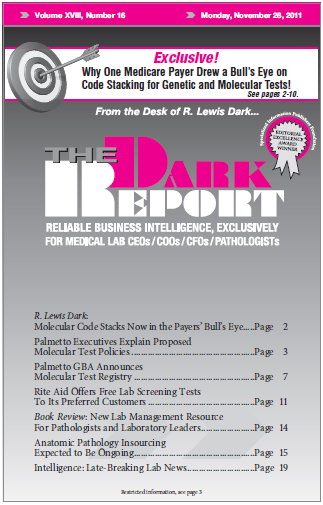CEO SUMMARY: Insourcing of anatomic pathology services by office-based physicians has been especially prevalent and is increasing among three specialties (gastroenterology, urology, and dermatology), according to a survey conducted last month. Survey respondents also indicated that the trend toward increased insourcing is so strong that it could spread to other specialty groups such as ob-gyns …
Anatomic Path Insourcing Expected to Be Ongoing Read More »
To access this post, you must purchase The Dark Report.


